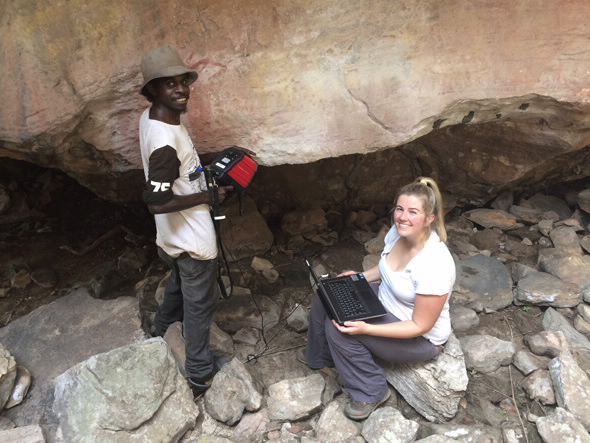
PHOTO: ansto.gov.au
A team of scientists from ANSTO’s Centre for Accelerator Science have developed a new technique that now makes it possible to use radiocarbon dating on ancient Australian rock art. A peer reviewer of the report published in The Journal of Archaeological Science Reports called it “the most significant rock art and dating paper to be produced in Australia in over 25 years”.
The technology was tested on a set of rock art sites in western Arnhem Land. The art there is part of a regional art style that researchers call NRF, or “Northern Running Figures”.
“The results are exciting,” Ms. Tristan Jones, a PhD canidate at the Australian National University said, “although they generally support the chronology and assumed antiquity for the NRF art style, they provide minimum ages which suggest that the art style is actually a few thousand years older than what was anticipated.”
According to Jones, the dating also shows that the art was created over a long period, suggesting that the art style was popular for thousands of years, and developed very little over that period of time. The best part? The technology can be used to date some of the oldest known art styles in Australia, giving us a much better picture of the history of human occupation on the continent.
“Indigenous Australian rock art is very interesting, it is believed to be among the most ancient in the world but it is one of the least dated.” – Dr. Vladmir Levchenko, research scientist working on the western Arnhem Land sites.

PHOTO: ansto.gov.au
Australian rock art is generally impossible to radiocarbon date, since the artists used ochre, an inorganic pigment containing no carbon to create the art. Without the presence of carbon, no dating can take place. To work around this problem, the team of researchers extracted calcium oxalate from a mineral crust that had formed on the surface of the rock art. Inside the mineral crust, the researchers found small traces of carbon. This carbon had been formed by microorganisms living in the mineral crust.
“These microorganisms are photosynthetic bacteria, like cyanobacteria or algae, which can utilise carbon from the air normally, and are active through wet periods,” Levchenko explained. Logically, “the figure depicted in the painting cannot be younger than the growth upon it.”
Using the carbon formed from the microorganisms, they’ve been able to come up with a pretty accurate date for the rock art. According to their paper, it’s almost 10,000 years old.
Using this new technique, they’re hoping to get approximate dates for the rest of Australia’s rock art. These dates can tell us a lot about when humans first came to Australia, and give us rough estimates for when certain art styles were popular, painting a picture of the past…all thanks to a few microorganisms.

